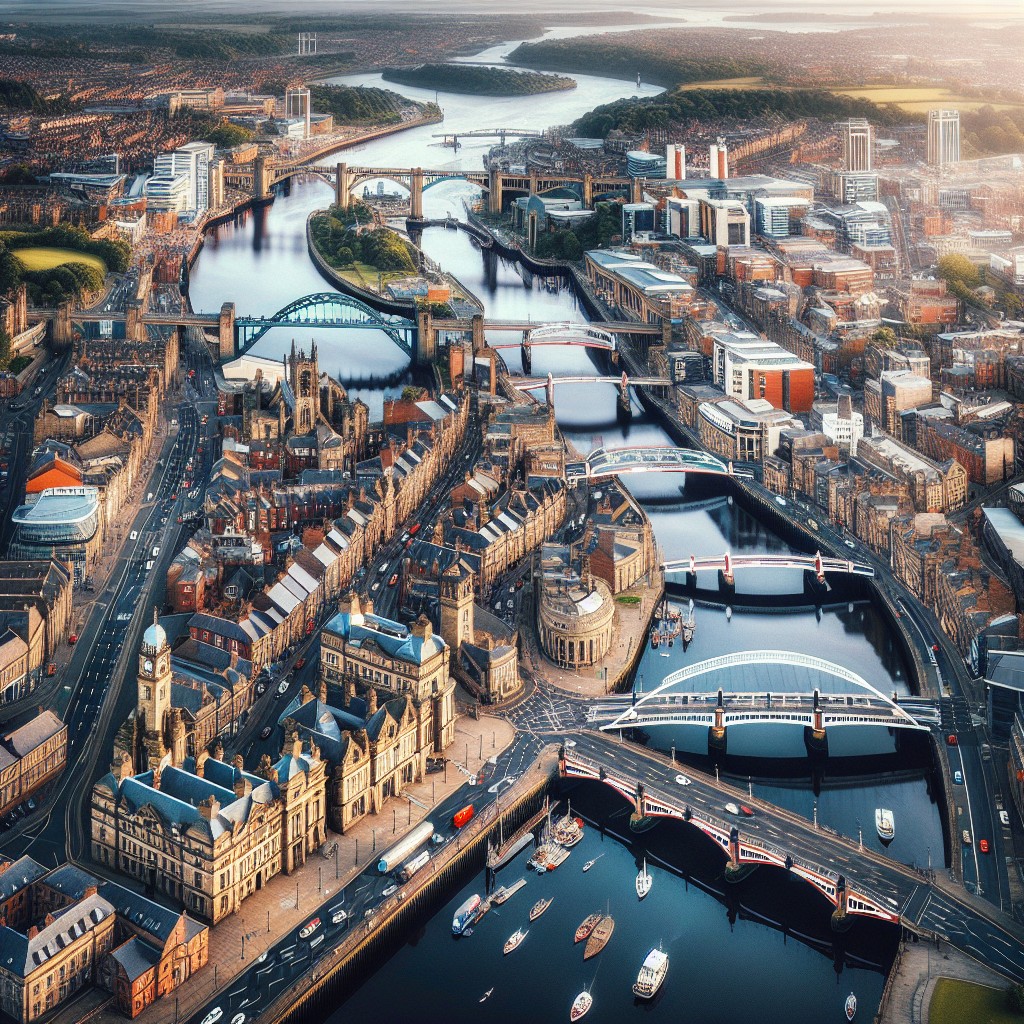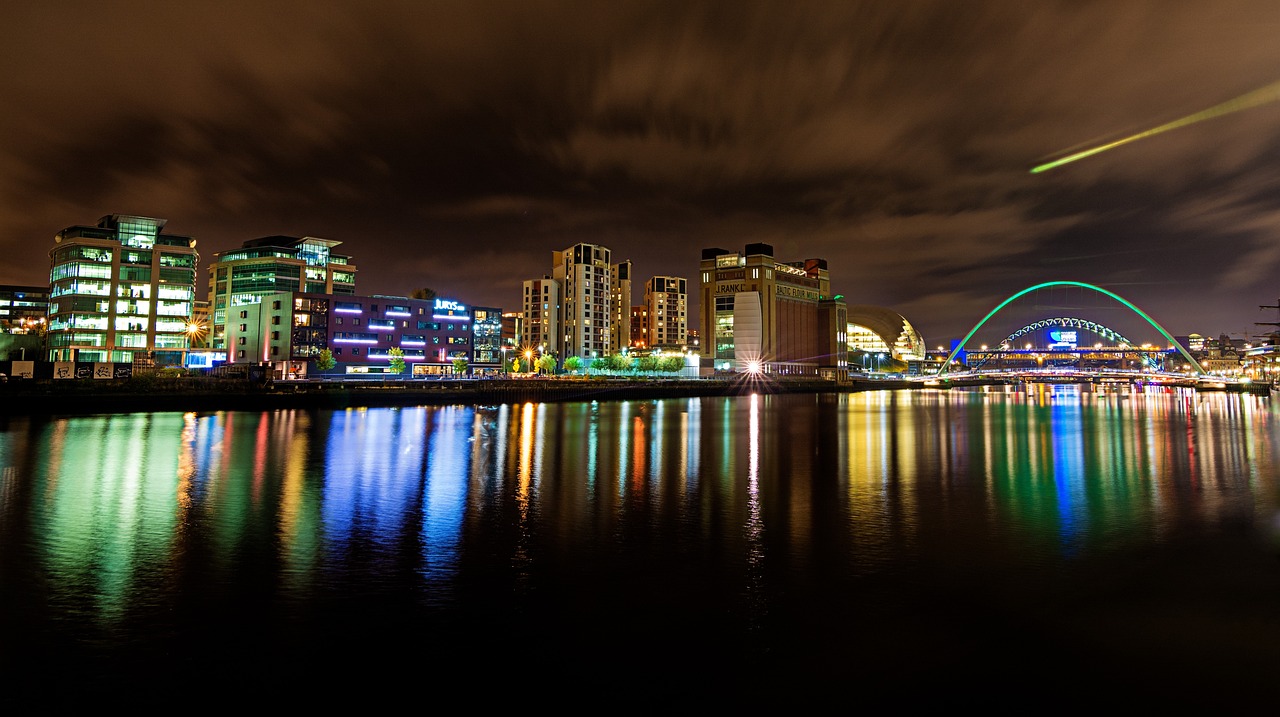
Tyne and Wear is a metropolitan county located in the northeast of England. It is made up of five boroughs: Newcastle upon Tyne, Gateshead, North Tyneside, South Tyneside, and Sunderland. The region is known for its rich history, vibrant culture, and stunning landscapes.
Tyne and Wear holds great importance in the UK due to its economic significance and cultural contributions. The region has a strong industrial heritage and has played a crucial role in the country’s history. It is also home to several prestigious universities and has a thriving arts and music scene. With its diverse range of attractions and landmarks, Tyne and Wear attracts visitors from all over the world.
Summary
- Tyne and Wear is a metropolitan county in North East England, consisting of five boroughs.
- The area has a rich history dating back to Roman times, with notable landmarks such as Hadrian’s Wall.
- Tyne and Wear boasts a diverse range of geographical features, including rivers, coastline, and landscapes.
- The economy and industry in the area have evolved over time, with a focus on shipbuilding, coal mining, and now service industries.
- Tyne and Wear has a vibrant culture and society, with a thriving arts and music scene, as well as numerous festivals throughout the year.
History of Tyne and Wear – From Roman Times to Modern-Day
The history of Tyne and Wear dates back to Roman times when the area was occupied by the Romans who built a fort on the banks of the River Tyne. The region flourished during the medieval period with the growth of trade and the establishment of Newcastle as a major port. The Industrial Revolution in the 18th century brought about significant changes to Tyne and Wear, with coal mining, shipbuilding, and manufacturing becoming key industries.
During World War II, Tyne and Wear played a vital role in supporting the war effort through its shipbuilding industry. However, the decline of heavy industry in the latter half of the 20th century had a significant impact on the region’s economy. Today, Tyne and Wear has undergone a transformation and has diversified its economy to include sectors such as digital technology, healthcare, and tourism.
Geographical Features of Tyne and Wear – Rivers, Coastline and Landscapes
Tyne and Wear is characterized by its diverse geography, which includes rivers, coastline, and stunning landscapes. The region is situated on the banks of the River Tyne and the River Wear, which have played a crucial role in its history and development. The rivers provide a picturesque backdrop and are popular for activities such as boating and fishing.
The coastline of Tyne and Wear stretches for miles, offering beautiful sandy beaches and rugged cliffs. The region is home to popular seaside towns such as Tynemouth and South Shields, which attract visitors with their charming promenades and vibrant atmosphere. The coastline also offers opportunities for water sports such as surfing and sailing.
In addition to its rivers and coastline, Tyne and Wear boasts stunning landscapes such as the Northumberland National Park and the Durham Dales. These areas are perfect for outdoor enthusiasts, offering opportunities for hiking, cycling, and wildlife spotting. The region’s diverse geography makes it a haven for nature lovers.
Economy and Industry in Tyne and Wear – Past and Present
The economy of Tyne and Wear has evolved significantly over the years. Historically, the region was known for its heavy industries such as coal mining, shipbuilding, and manufacturing. These industries played a crucial role in the growth of the region during the industrial revolution.
However, with the decline of heavy industry in the latter half of the 20th century, Tyne and Wear had to adapt to new economic realities. Today, the region has diversified its economy to include sectors such as digital technology, healthcare, tourism, and creative industries.
The digital technology sector in Tyne and Wear has seen significant growth in recent years. The region is home to several tech companies and startups, which have contributed to its reputation as a hub for innovation. The healthcare sector is also a major contributor to the region’s economy, with several hospitals and research institutions located in Tyne and Wear.
Tourism is another important industry in the region, with visitors attracted to its rich history, vibrant culture, and stunning landscapes. The creative industries, including arts, music, and film, also play a significant role in the region’s economy. Tyne and Wear has a thriving arts and music scene, with numerous galleries, theaters, and music venues.
Culture and Society in Tyne and Wear – Arts, Music, and Festivals
Tyne and Wear is known for its vibrant culture and rich artistic heritage. The region has a thriving arts scene, with numerous galleries, museums, and theaters. The BALTIC Centre for Contemporary Art in Gateshead is one of the largest contemporary art venues in the UK and attracts visitors from all over the world.
The music scene in Tyne and Wear is also vibrant, with a rich history of producing talented musicians. The region has been home to several influential bands and artists, including Sting, Bryan Ferry, and the Futureheads. The Sage Gateshead is a world-class music venue that hosts a wide range of concerts and events throughout the year.
Tyne and Wear is also known for its lively festivals and events. The Great North Run, one of the largest half marathons in the world, takes place in Newcastle every year and attracts thousands of participants and spectators. The Sunderland International Airshow is another popular event that showcases spectacular aerial displays.
Education in Tyne and Wear – Schools, Colleges, and Universities
Tyne and Wear has a strong education system, with several prestigious schools, colleges, and universities. The region is home to two leading universities: Newcastle University and Durham University. These institutions are renowned for their academic excellence and research contributions.
In addition to universities, Tyne and Wear has a wide range of schools and colleges that provide high-quality education to students of all ages. The region has a strong focus on vocational training and apprenticeships, providing students with practical skills that are in demand in the job market.
Education plays a crucial role in the region’s economy by providing a skilled workforce that can contribute to its growth and development. Tyne and Wear’s universities and colleges also attract students from all over the world, contributing to the region’s cultural diversity.
Sports and Recreation in Tyne and Wear – Football, Rugby, and More
Tyne and Wear has a strong sporting culture, with football being the most popular sport in the region. Newcastle United Football Club, based in Newcastle upon Tyne, has a passionate fan base and competes in the English Premier League. The club’s stadium, St James’ Park, is one of the largest football stadiums in the UK.
Rugby is also popular in Tyne and Wear, with the Newcastle Falcons representing the region in the top tier of English rugby. The Falcons have a dedicated fan base and play their home games at Kingston Park Stadium.
In addition to football and rugby, Tyne and Wear offers a wide range of sports and recreational activities. The region has numerous sports facilities, including swimming pools, gyms, and golf courses. Outdoor enthusiasts can enjoy activities such as hiking, cycling, and water sports along the region’s rivers and coastline.
Transport and Infrastructure in Tyne and Wear – Roads, Railways, and Airports
Tyne and Wear has a well-developed transport infrastructure that connects it to other parts of the UK and beyond. The region is served by several major roads, including the A1(M) motorway, which provides easy access to cities such as Edinburgh and London. The Tyne Tunnel connects Newcastle upon Tyne with North Tyneside, providing a vital link for commuters.
The region also has an extensive railway network, with several train stations serving Tyne and Wear. Newcastle Central Station is one of the busiest railway stations in the UK and offers direct connections to major cities such as London, Edinburgh, and Manchester.
Newcastle International Airport is the main airport serving Tyne and Wear. It offers flights to domestic and international destinations, making it convenient for both business and leisure travelers. The airport plays a crucial role in the region’s economy by facilitating trade and tourism.
Places to Visit in Tyne and Wear – Attractions, Landmarks, and Heritage Sites
Tyne and Wear is home to a wide range of tourist attractions, landmarks, and heritage sites. Newcastle upon Tyne, the region’s largest city, offers a mix of historic architecture and modern attractions. The iconic Tyne Bridge and the Gateshead Millennium Bridge are must-see landmarks that span the River Tyne.
The region is also known for its historic castles, including Tynemouth Castle and Bamburgh Castle. These castles offer a glimpse into the region’s medieval past and provide stunning views of the coastline.
For art lovers, the BALTIC Centre for Contemporary Art in Gateshead is a must-visit. The gallery showcases contemporary art from around the world and offers stunning views of the River Tyne.
Future of Tyne and Wear – Growth, Development, and Sustainability
The future of Tyne and Wear looks promising, with plans for growth, development, and sustainability. The region is investing in infrastructure projects to improve transport links and attract investment. The development of new housing, commercial spaces, and cultural venues is also a priority.
Sustainability is a key focus for Tyne and Wear, with efforts being made to reduce carbon emissions and promote renewable energy sources. The region is also investing in green spaces and promoting sustainable tourism practices.
Overall, Tyne and Wear has a bright future ahead with its diverse economy, rich cultural heritage, and stunning landscapes. The region’s commitment to growth, development, and sustainability ensures that it will continue to thrive in the years to come.
FAQs
What is Tyne and Wear?
Tyne and Wear is a metropolitan county in the northeast of England. It was created in 1974 and is made up of five boroughs: Newcastle upon Tyne, Gateshead, North Tyneside, South Tyneside, and Sunderland.
What is the population of Tyne and Wear?
As of mid-2019, the estimated population of Tyne and Wear was 1,142,000.
What is the largest city in Tyne and Wear?
Newcastle upon Tyne is the largest city in Tyne and Wear, with a population of approximately 300,000.
What is the economy of Tyne and Wear based on?
Historically, Tyne and Wear was known for its coal mining and shipbuilding industries. Today, the economy is more diverse, with a focus on service industries such as retail, healthcare, and education. There is also a growing digital and creative sector.
What are some popular tourist attractions in Tyne and Wear?
Some popular tourist attractions in Tyne and Wear include the Angel of the North sculpture, the Tyne Bridge, St. James’ Park (home of Newcastle United Football Club), the Sunderland Empire Theatre, and the Beamish Museum.
What is the climate like in Tyne and Wear?
Tyne and Wear has a temperate maritime climate, with mild winters and cool summers. The average temperature in January is around 4°C (39°F), while the average temperature in July is around 16°C (61°F). Rainfall is fairly evenly distributed throughout the year.




